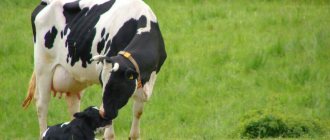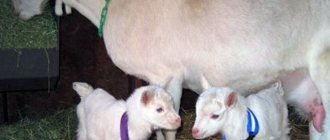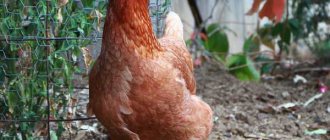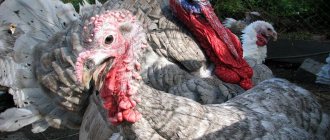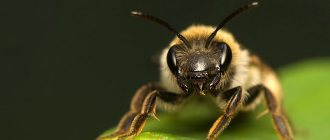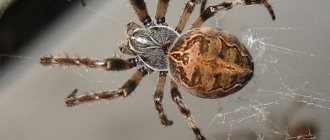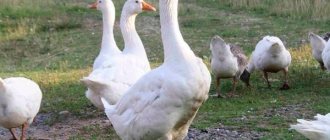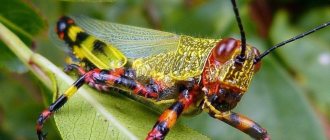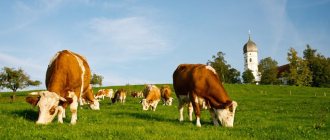The Boer goat breed belongs to the meat artiodactyls. Although many farmers breed it for milk. This is due to the fact that goat meat is considered tough, which is why it is not very popular. However, the product from the Boer breed tastes like veal, for which it is highly valued by real gourmets.
Origin of the breed
Goat breeding has been practiced in Africa since ancient times. Breeding artiodactyls occupied a leading place among animal husbandry. This is due to the ability of goats to adapt to any conditions, digest roughage better than others, and are highly resistant to various diseases.
You may be interested: A pig is... Description of the animal, types
When Dutch settlers arrived in southern Africa, they decided to transform the animals, creating a new breed through planned selection. For this purpose, goat breeds were imported from India and European countries. By interbreeding, a new species was obtained. We are talking about a breed of Boer goat.
High productivity contributed to the rapid spread of the species throughout the world. Now it is grown in the USA, South Africa, New Zealand and other countries of the world. There are few Boer goats in Russia.
Fame in Russia and other countries
Adherents of meat goat breeding around the world quickly appreciated the merits of Boer goats. In addition to Africa, the breed is actively bred in New Zealand, India and China, Asian countries, the USA and Canada. Among European countries, the leaders in this area are the Netherlands and Germany. There is a fairly widespread population in France and Belgium.
In Russia, meat goat breeding is traditionally not very developed; this niche is still free. However, we must take into account that the demand for high-quality goat meat is growing, and, according to experts, will increase in the future. There are programs to improve the parameters of the local livestock by crossing with breeding animals, including the Boer breed.
There are also other uses: sometimes bosters are bred as ornamental animals, used in the field of agrotourism, and in petting zoos. This is facilitated by the good disposition and attractive appearance of goats. In addition, bosters maintain the condition of natural landscapes, preventing overgrowth of bushes and tall grasses: one goat plucks shoots from an area of up to 10 acres.
Peculiarities
You may be interested in:Colored chickens as an Easter tradition
The Boer goat breed has a number of distinctive features. It is characterized by a unique color and unusual appearance. Purebred individuals are usually white with a brown head or completely brown. Other color options are allowed only in admixtures.
According to the description, the Boer goat breed differs from others in its massiveness, large head with an unusual convex skull shape and a pronounced Roman nose. Horns of medium length. In goats they are twisted in the shape of a sickle. Crossbreeds may have horns of different shapes.
The breed is characterized by the following:
- Heavy weight. Goats can weigh 110-150 kg. Goat weight – from 80 kg.
- The breed has sufficient milk production - up to 150 liters per year with a lactation period of up to 5 months.
- Newborn kids weigh about 5 kilograms. They quickly gain weight, gaining up to 500 grams or more per day.
- Goats are a meat breed with a slaughter yield of 60%.
A characteristic feature of the species is long hanging ears and short hair.
Boer meat goats are large animals that resemble Nubian animals in appearance. But the one being studied on the udder may have four teats, but two lobes. This fact is permissible only in this breed of goats.
Animals are characterized by a high growth rate. Early maturation of young animals allows for slaughter as early as 6 months with a live weight of 50 kg.
You may be interested in: Broiler rabbits: review, description, characteristics
Description
Animals have large body volumes, the live weight of males starts from 110 kg and can reach up to 135 kg, females also have significant body volumes from 90 to 100 kg. Purebred Boer goats have a white coat except for the head area, and in this area the coat color is brown. According to its composition, to the touch, the wool is smooth with short hair. Wide chest, oval head. The horns of the Boer breed are small and point backward. But the ears are quite large and hang down. The legs are large, but rather short, the hooves are massive. The muscles are well developed in the chest and back, and on the hips. The tail is erect and small in size. It is noted that Boer goats are calm animals, not aggressive, early maturing, and adapt well to various weather conditions. High immunity allows animals to be resistant to various diseases common in goat farming. They also produce good quality meat.
How to increase your herd
According to the description, the breeding of the Boer goat breed is carried out with year-round grazing at temperatures above minus 10°. Deep snow cover has a detrimental effect on animals, as they are unable to obtain food from under the snow. Although their winter diet consists mainly of shrubs, the lack of nutrients negatively affects fattening qualities.
The Boer breed is responsive to fattening. For greater fatness, animals are kept without grazing. However, this option increases the proportion of adipose tissue, but muscle mass does not change.
To obtain tender meat, farmers recommend combining walking with fattening with concentrated feed. It is rational to use inexpensive waste, such as cake, meal, barna.
A special feature of Boer goat breeding is the choice of the producer. The resulting offspring depends on the quality of the goat. Even goats of average fatness can produce productive young animals that will surpass their parents in weight and growth rate. Such animals are capable of gaining about 35-40 kg of live weight by three months. If the producer is not of high quality, then by this age young goats can weigh no more than 15 kg.
To increase the efficiency of goat rearing, compacted lambing is practiced. To do this, they try to get three kids from one queen in 2 years.
During the first pregnancy, young females bring one kid at a time, but in subsequent pregnancies they bring two kids. Young females are ready to mate at 5 months, but experienced farmers who breed Boer goats recommend waiting another 1-2 months so that the young animals get a little stronger and gain strength to bear offspring.
Performance
The main purpose of keeping Boer goats is to obtain meat products.
The slaughter yield reaches approximately 54% of the live weight of the animal. Meat obtained from cattle of this variety is characterized by high taste. This is a tender and juicy product with an aroma reminiscent of the usual veal.
Female representatives are characterized by fertility and a highly developed maternal instinct. Over a two-year period, a female Boer breed is capable of bearing offspring up to three times.
Important! During the first litter, most often one kid is born. With each subsequent pregnancy, there can be two, and sometimes even three, cubs.
The duration of pregnancy in Boer goats is 5 months. The weight of a newborn goat reaches approximately 4 kg. Babies are characterized by active development and growth. The daily weight gain during the first months is approximately 250 grams. The duration of the suckling period is 3 months, after which the kids’ diet consists of the usual types of feed.
To avoid the appearance of an unpleasant specific aroma in the resulting meat products, young animals intended for slaughter are castrated at an early age. The skins of such cattle are also valuable.
Receiving milk
Some farmers use goats to produce not only excellent meat, but also milk. For this purpose, early weaning of goat kids is carried out, while milking the animal continues. The young animals are fed with goat milk substitutes or through feeders. This method allows not only to obtain dairy products, but also to compact the lambing.
Productivity
Boer goats are excellent mothers, this has a positive effect on the amount of growth in the herd, which is increasing rapidly. Young females give birth to 1 kid for the first time, and in subsequent births there are several kids. The uterus feeds them for 3 months. The owners can place the babies early if the goat is needed to obtain milk.
Since Boer goats are bred primarily for goat meat, the quality of the meat and its volume are especially valuable. The slaughter yield is 54 percent. The taste of goat meat is tender and juicy.
Advice: According to the specific taste, Boer goat meat is similar to beef, if it is not too pleasant, you can neutralize it, in this case, young goats will have to be castrated when growing, and slaughtered when they reach 35 kilograms in weight, then the consistency will be more tender.
In addition to goat meat, skins are obtained from large Boer representatives. They are needed in the textile industry. Products made from goat fur have average thermal conductivity. Outerwear and shoes can be sewn from goat skin; wool makes excellent warm clothing.
Tip: The fur of Boer animals does not have a specific smell, like other types of goats.
A meat goat can also produce milk, although in a smaller volume than dairy varieties, only 2 or 3 liters per day.
Manufacturers
The advantages and disadvantages of Boer goats determine the possibilities of their breeding. Most often, interbreeding is carried out by crossing Boer goats with the queens of meat breeds. Purebred crossing is rarely practiced, as it is expensive. The price of the Boer goat breed reaches 100,000 rubles and more. For this amount you can purchase about ten heads of meat goats, which will be more profitable for the farmer.
When breeding, the goal is to gradually increase the proportion of Boer blood in the resulting animals. In this way, farmers manage to obtain a stable, highly productive cross. This model of goat breeding is used in many countries of the world where there is no developed dairy goat farming.
Principles of raising Boer goats in the Russian Federation
The variety of cattle bred in Africa is nevertheless adapted to life in a hot, arid climate. In the harsh Russian winter, animals must be kept indoors, which can affect their development and weight gain. For this reason, in the territory of the central zone of the Russian Federation, representatives of this breed develop more slowly than is usually the case.
Boer goats are not popular in our country, so they can rarely be found on Russian livestock farms. Moreover, such animals are not cheap.
Advantages
The Boer breed has a number of advantages. It is characterized by:
- resistance to high temperatures;
- high quality meat;
- unpretentiousness in the diet;
- calm character;
- excellent endurance and easy adaptability to living conditions;
- high fertility of goats;
- high level of male productivity.
Offspring
Females mature at five months of age. Despite the readiness of goats to mate, experts recommend extending the non-barrenness of females for a month or two. The first offspring is one kid, then the goat gives birth to two or more kids. Females remain pregnant for five months, then give birth.
Babies are born four kilograms, their rapid development and excellent growth are accompanied by a weight gain of 250 g in the first months of life.
Boer females have low milk yield. During lactation, a goat produces approximately 2 liters of milk per day. Young animals do not always have enough of it during the feeding period; livestock breeders will have to supplement their babies from a bottle with a nipple. The kids are growing at a fast pace. Three-month-old cubs have a body weight of 30 and even 40 kilos; they can be sent for slaughter.
When crossing Boer animals with representatives of other breeds, Nubian or Angora goats are preferable.
The Boer queen can give birth at any seasonal period. All females lamb lamb year after year.
Maintenance, care
The Boer breed of goats has a calm disposition, which is why the animals graze well with other representatives of artiodactyls. They get along well with cows, horses, and sheep. Animals are unpretentious in food and can quickly gain weight even with poor nutrition. However, leaves, young shoots, hedges, and shrubs are preferable for them.
Boer goats are suitable for any living conditions, the main thing is to provide them with access to clean water.
In winter, the diet should consist of hay, food waste, concentrated feed, cake, and root vegetables. Goats are content with any feed, so they are selected so that costs are minimal.
During the warm season, goats eat green food on pastures. In addition, they are given various additional food. When adding new feeds, you can choose exactly the feeding scheme that will help you get the maximum amount of product.
For the Boer breed, it is important to take into account the temperature regime during the winter - it should not fall below +5 degrees. In cold winters the stall is heated.
Be sure to pay attention to the floor. It can be covered with straw or sawdust. This is necessary to keep the animals warmer.
Goats are afraid of drafts, so ventilation is provided in the room. It will eliminate the need to open doors again for ventilation and will keep the humidity level at the optimal level - 60-80%.
Feeders are installed along the walls. A high fence with a hole for the head is built along the entire perimeter so wide that the animals can stick their heads through.
The Boer breed differs from others in its high resistance to various diseases. But even excellent immunity does not guarantee that animals will not get sick when kept in rooms with high humidity levels. The weak point of goats is their limbs. Boer representatives have their hooves trimmed. This procedure is carried out twice a year - before winter and spring, before the goats go to graze.
In summer, goats are kept under a canopy. It protects them from rain and scorching sun. Feeders and drinking bowls will also be installed there.
In order to increase immunity, animals are vaccinated.
Boer goat nutrition
Separately, it is worth mentioning the nutrition of Boer goats. These representatives of cattle are unpretentious animals in terms of nutrition. However, experts advise following some rules when feeding:
- The diet should include greens in significant quantities. This breed is often used to get rid of problems with overgrown areas. To improve the garden area of a private house, Boer goats are an ideal option.
- During the warm period of the year, the basis of nutrition for this type of cattle should be fresh greens; if desired, supplementary feeding can be used. And in the cold season, hay should be used as the main food product for Boer goats.
- In addition, these animals should be fed vegetables, root vegetables and solid foods.
- Representatives of this breed are able to get used to any food; training must be carried out gradually and carefully. You should not suddenly switch livestock to new products, as this can lead to disruption of intestinal functions, as well as worsening the physical condition of the individual as a whole.
- Representatives of this breed for the most part have a calm and docile character, so they can easily get along in the same pasture with other farm animals, cows or horses.
Food for this type of livestock is a non-critical factor. They easily tolerate changes in diet and can eat both abundant and meager food. The diet must contain all the required vitamins and minerals for the body to develop and function normally.
If these simple requirements are met, the livestock breeder will be able to care for Boer goats without any problems. In the case of keeping representatives of this type of livestock for the purpose of obtaining offspring, further information on this issue should be studied.
